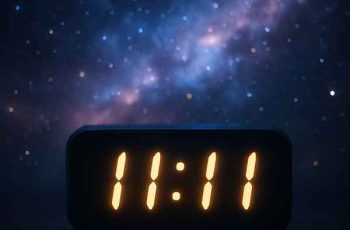Have you ever noticed a meaningful coincidence that made you stop and wonder? Like thinking of a friend moments before they call, or seeing repeating numbers during a major life decision? These moments are often called “synchronicities”—those rare intersections between chance and meaning that seem to whisper, There’s more to this world than meets the eye.
But what is synchronicity, really? Is it just the brain’s tendency to find patterns? Or is there a deeper, perhaps spiritual, reality at play? Let’s explore both the scientific perspective and the spiritual traditions that have been fascinated by synchronicity for centuries.
What is Synchronicity?
The term was coined by Swiss psychiatrist Carl Gustav Jung, who defined synchronicity as “meaningful coincidence”—events that are not causally connected, but hold personal significance for the observer. For Jung, these experiences were not random, but glimpses of the deep order of reality.
The Science Behind Synchronicity
Neuroscience and psychology explain a lot of synchronicity through:
-
Pattern recognition: Our brains are wired to seek connections and patterns, helping us make sense of chaos and uncertainty.
-
Confirmation bias: Once you notice a coincidence, your mind looks for more, strengthening the feeling that something “bigger” is happening.
-
Reticular Activating System (RAS): This brain system acts like a filter, tuning your awareness to what matters most to you—like hearing your name in a crowd, or noticing the number 11:11 when you’re feeling lost.
Yet, some researchers argue that these explanations don’t fully account for the emotional intensity or the life-changing impact of some synchronicities.
Fun fact: A 2016 study in the journal Psychiatry Research found that people who experience more synchronicities tend to score higher on measures of openness, creativity, and spiritual sensitivity.
The Spiritual View
Many spiritual traditions view synchronicities as “signs” or “messages” from the universe, guides, ancestors, or the divine. They suggest that life is an interconnected web—what happens inside us can be reflected in the outer world.
-
Jung’s archetypes: Jung believed synchronicities reveal underlying archetypes, collective patterns that shape our dreams, myths, and choices.
-
Eastern philosophies: Concepts like karma, dharma, and cosmic order suggest that nothing is truly random; meaning and destiny weave through everything.
-
Indigenous wisdom: Many cultures teach that nature, dreams, and animals communicate through signs—often arriving just when we most need them.
Why Do Synchronicities Matter?
-
They increase self-awareness and presence.
-
They bring comfort, validation, or a sense of purpose.
-
They can spark creativity, intuition, and spiritual growth.
-
For some, they are invitations to trust the flow of life rather than force outcomes.
How to Invite More Synchronicity into Your Life
-
Practise mindfulness—notice what’s happening within and around you.
-
Keep a synchronicity journal—record “coincidences” and your feelings about them.
-
Set intentions, but remain open to surprises.
-
Engage in creative activities (art, music, writing) to loosen rigid thinking and make space for new connections.
FAQ
Q: What is synchronicity?
A: A meaningful coincidence—unrelated events that connect with personal significance.
Q: Is synchronicity just luck or is there a deeper meaning?
A: Science points to pattern recognition, but spiritual traditions see synchronicity as a sign or guidance.
Q: Can you create more synchronicities?
A: You can become more aware through mindfulness, intention, and openness to life’s flow.
Q: Who invented the term?
A: Carl Gustav Jung, Swiss psychiatrist, in the early 20th century.
More soul, more stories, right this way:
- Spirituality and Mental Wellbeing: Finding Balance
- Somatisation: When the Body Speaks What You Cannot Say
- Art and Mental Health: How Creativity Supports the Mind
References
-
Jung, C. G. (1960). Synchronicity: An Acausal Connecting Principle.
-
Psychiatry Research, 2016. “Meaningful coincidences and personality”
-
Institute of Noetic Sciences, Synchronicity and Mind


